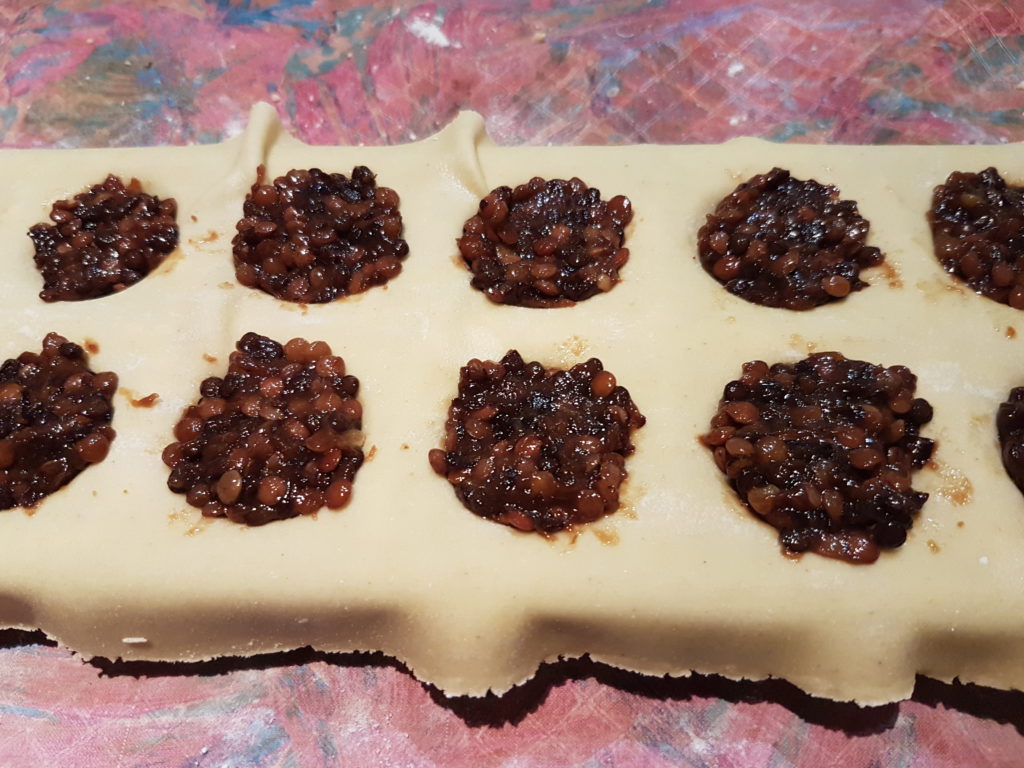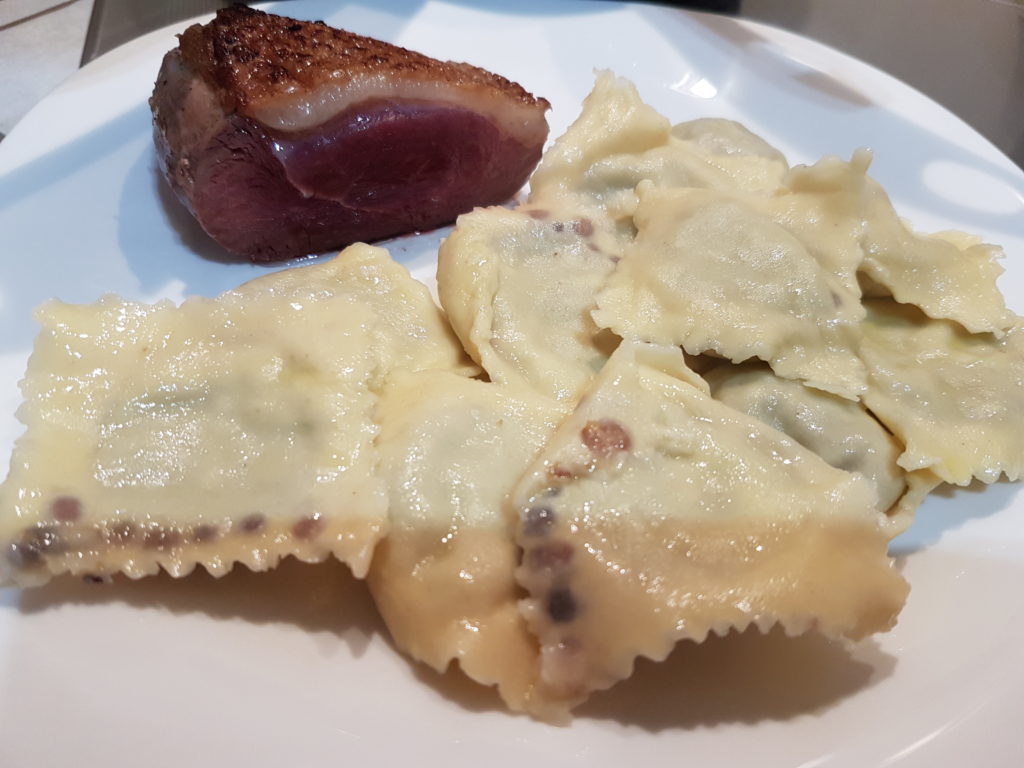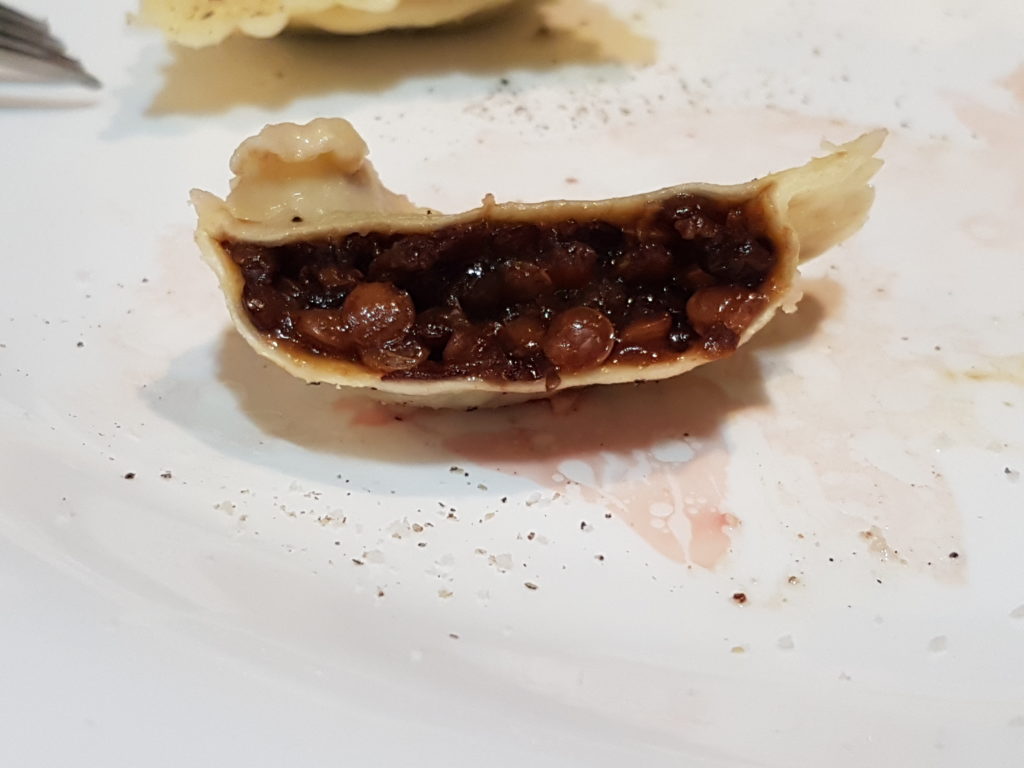They say goose is bland and dry
it’s always the same old story, I bet if you put it in an oven at 180°C for three hours opening the door every 30 minutes, you’ll end up with something dry.
I’ll introduce a method I’ve been using for a while to cook a duck filet, experience shows it also works for goose.
the recipe is mostly for the ravioli, a technique for cooking a goose filet can hardly be called a recipe, anyway, here goes.
for 2 servings
- 1 fat goose filet
- 200g fine semolina
- 2 fesh eggs
- 8 dried prunes -if you can, get some half dried-
- 80g lentils – Beluga, du Puy, lentillons de Champagne, any type you want except the coral stuff got a mix here –
- a little fine salt
- on teaspoon of Armagnac or any brandy you like (optional)
you got it right, we’ll start with the pasta dough semolina and eggs in the robot’s bowl with a hook we’ll want a relatively malleable dough to work afterwards, if you add a few drops of water to help with the kneading, no one will judge you.
Ten minutes kneading with the hook should yield a smooth dough, keep around one hour under plastic film in the fridge to let our friend the gluten build a pretty network
in the meantime we’ll cook the lentils 40 minutes heat just below a boil no salt start in cold water. we’re aiming for the lentils to remain ‘al dente’
remove the nuts from the prunes if any and blend or process until you obtain a coarse purée.
once the lentils are cooked sieve them and mix with the prune puree add salt to taste and the eventual Armagnac, reserve.
laminate your dough to size 2 (0,7 mm) twice the length of your ravioli mold , cover it and fill your cavities with around a teaspoon of farce, don’t overfill your cavities.
as the picture shows, I use a manual ravioli mold. before closing I tap the rim and junctions lines with a wet finger to help the two layer stick to one another
cut down the ravioli and store the aside before cooking with a cloud flour to avoid sticking

now for the the filet…
cooking a fat goose (or duck) filet, you wanna watch those four steps
- preparation,
- fat melting
- cooking
- browning
the preparation will require you to lacerate in a grid pattern the skin side of your filet, this will allow the fat to melt easierly, 3 to 5 mm side grid will do nicely. You should also check for remaining feathers or wax pieces from the feathering process.
Next up, you’ll want to remove the fat from your filet, place it skin down on a medium heated pan according to the fat quantity and size of your filet this can take between 5 and 9 minutes, empty the melted fat twice, once in the middle of the cooking, once in the end.
For the main cooking phase, turn down the heat a little, and turn the filet upside down, cover the pan to keep most of the heat, but leaving sufficient airflow for th steam to escape this should last 9 to 15 minuts, the filet should have swelled, but remain soft to the touch, while the skin is facing up, sprinkle some salt on top of it.
browning is just what it sounds like , we’ll want to make the skin crispy and brown, to do so, we’ll turn the heat to high and place the skin down to sear and brown it. Less than a minute should be enough.
A few minutes before the end of the duck cooking, prepare your pasta. For fresh pasta, the usual timing is less than two minutes in boiling water, since those have a filling, my recommendation is between 2 and 4 minutes. sieve and replace in the pot with a little touch of vegetable oil (olive if you have some) to avid sticking until service.
Cut two halves of the filet, place on a hot plate and split the ravioli evenly in each plate.
Serve hot.

detail of a ravioli

